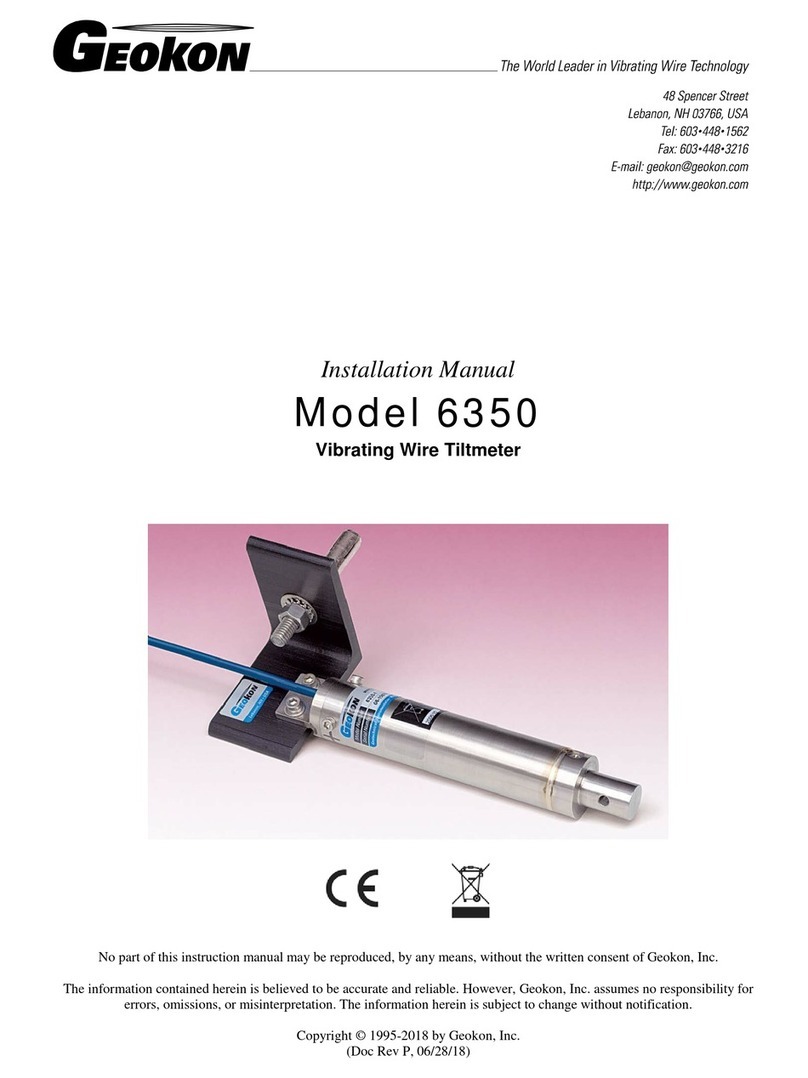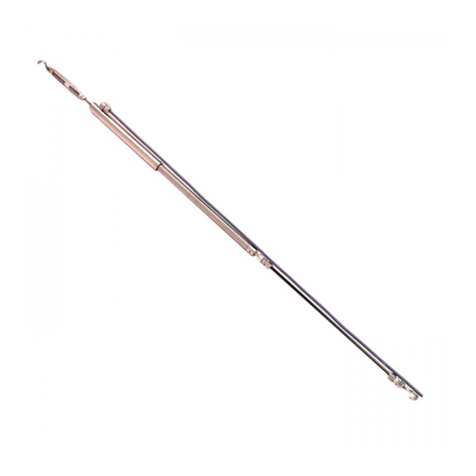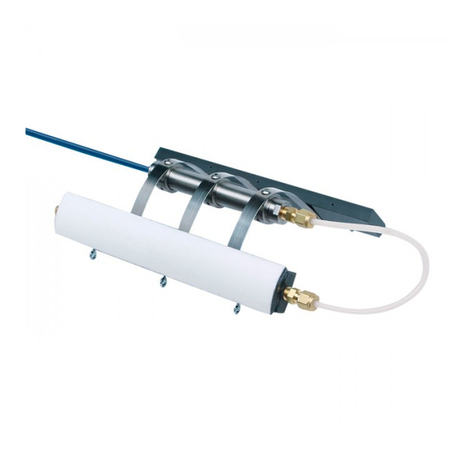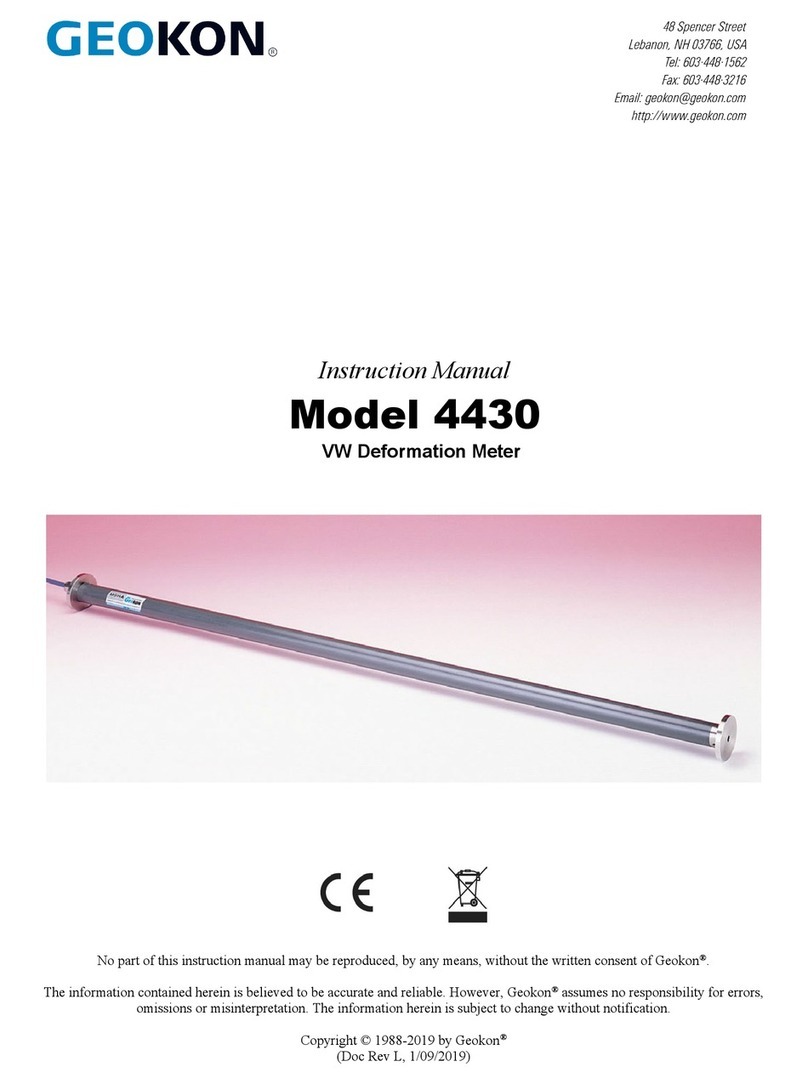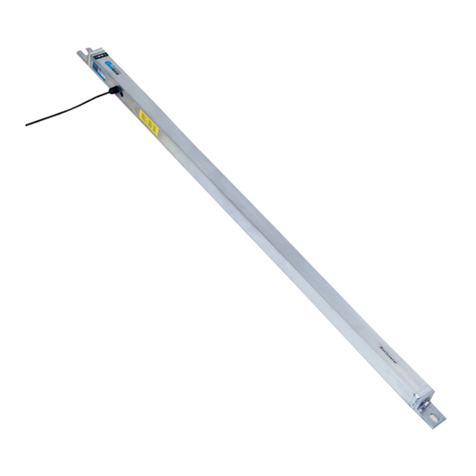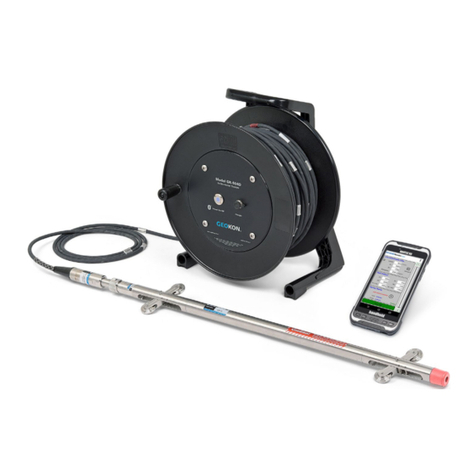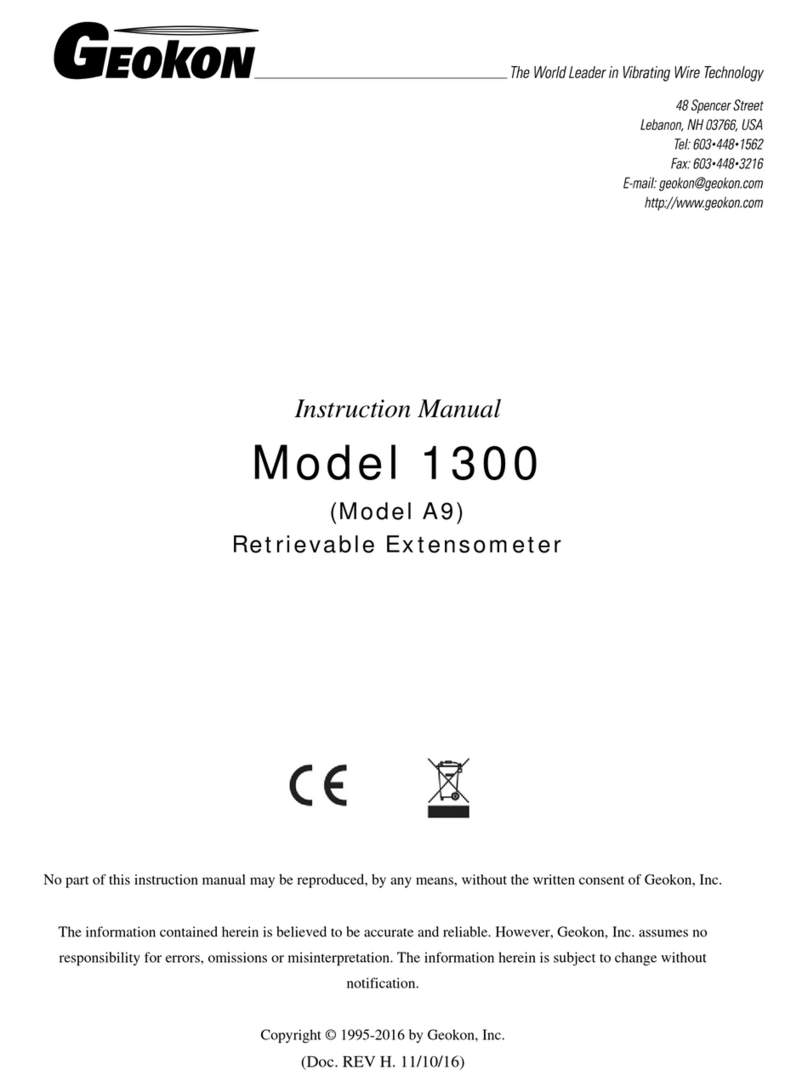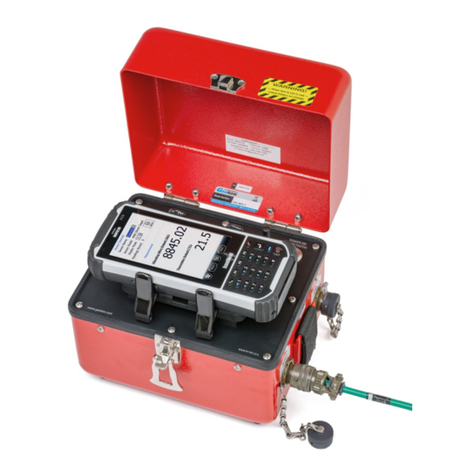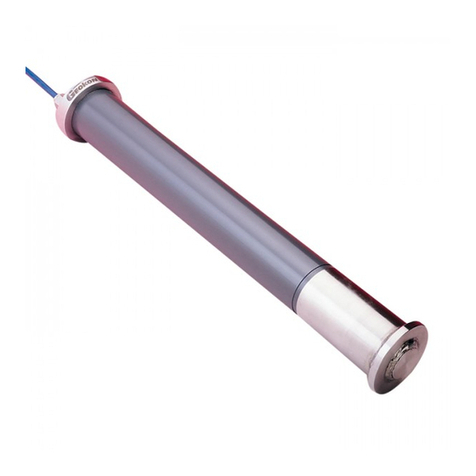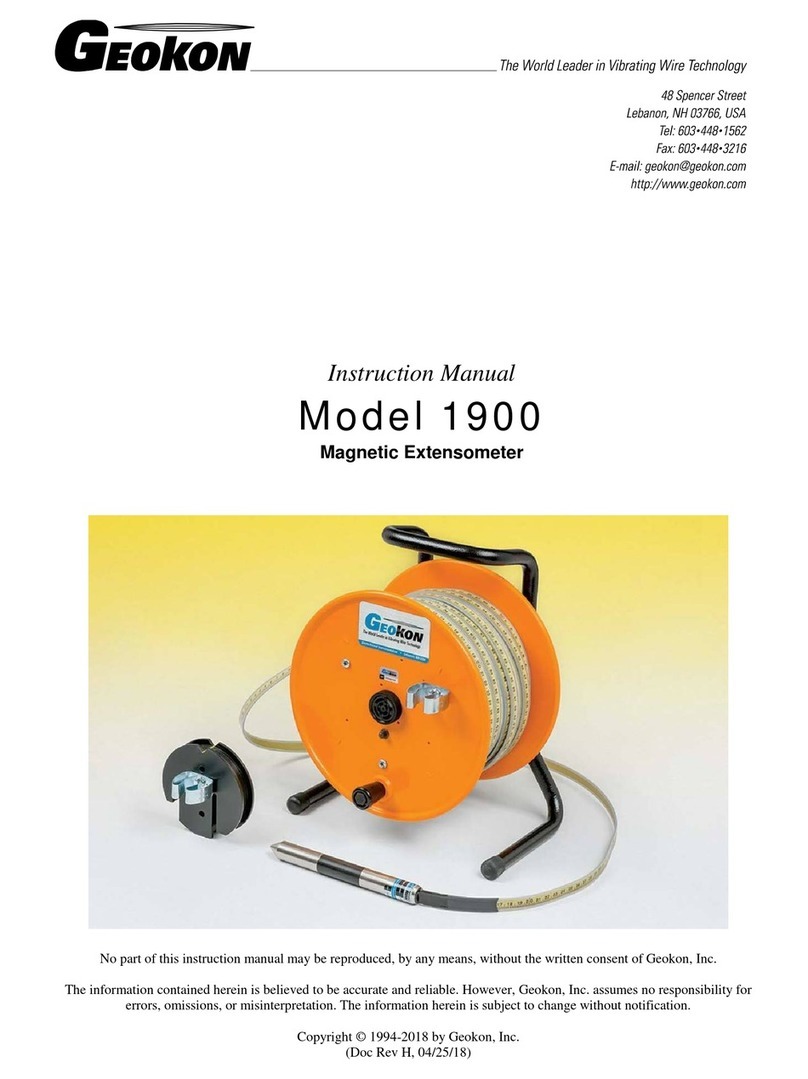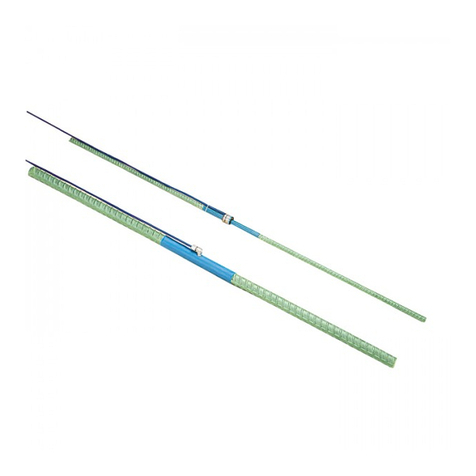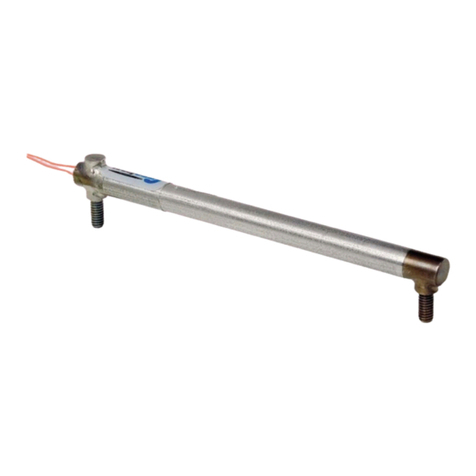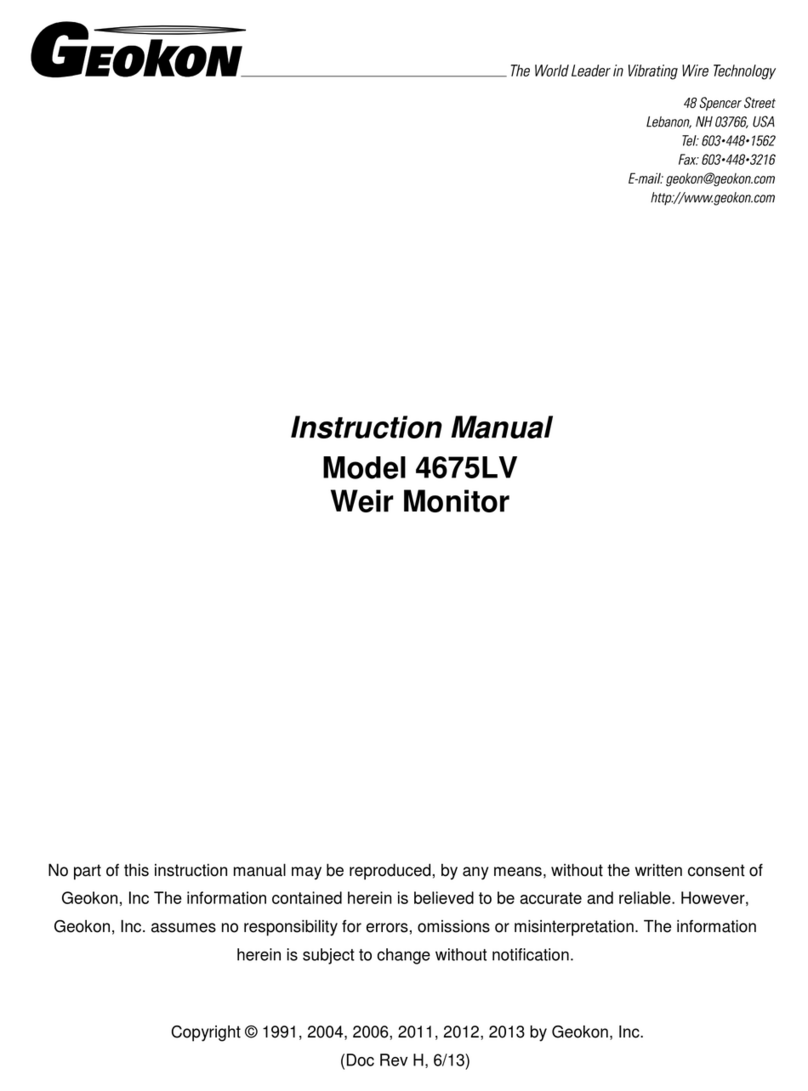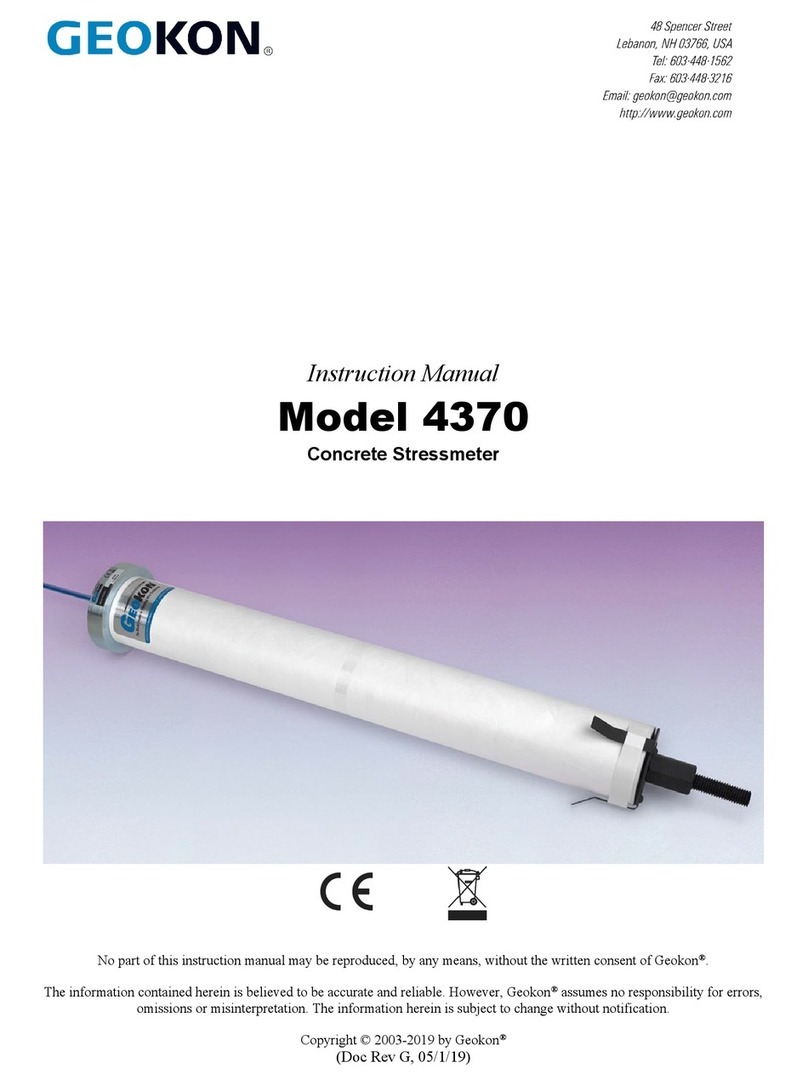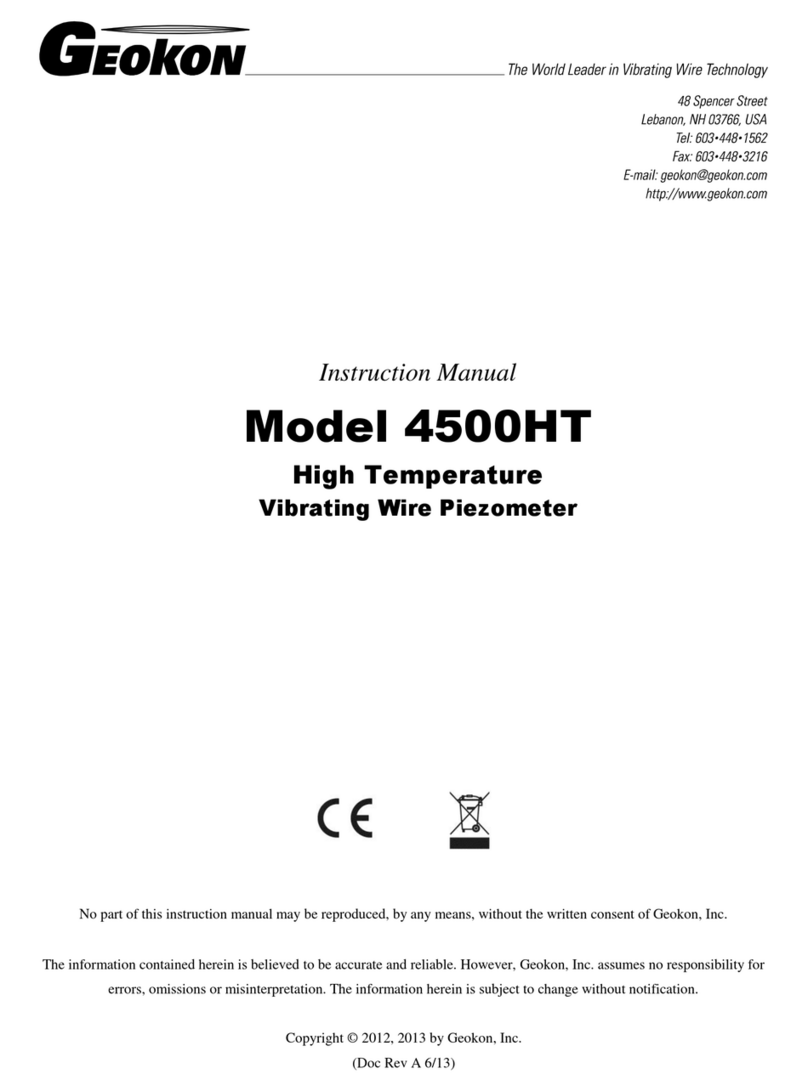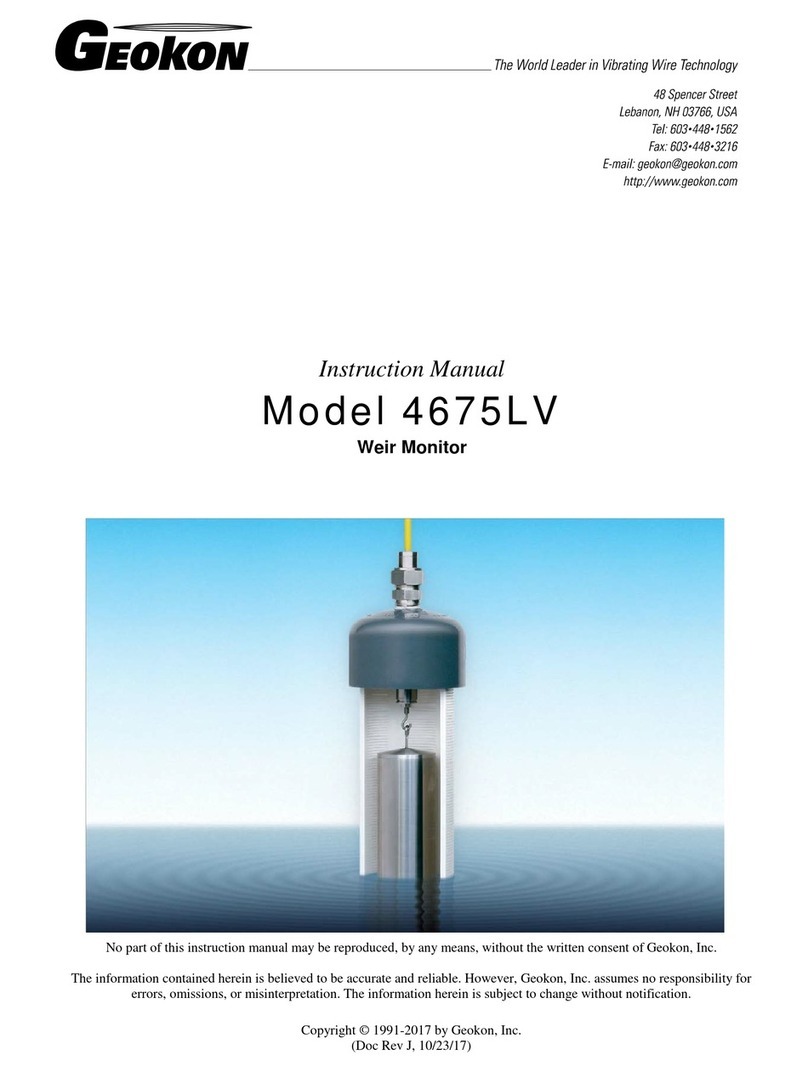
MODEL GK-604D DIGITAL INCLINOMETER SYSTEM | QUICK START GUIDE |
3. Attach the pulley assembly to the top of the casing. If using a casing
extension, attach the pulley assembly to the top of the extension. Use of the
pulley assembly is highly recommended, as it reduces fatigue on the user
during monitoring and it helps provide repeatable and consistent placement
of the probe at each reading interval, which improves measurement
accuracy.
4. Align the probe so that the uppermost wheel fits into the casing groove that
faces the direction of the anticipated movement (in the case of a slope this
would be downhill, or, in the case of a shoring wall, in the direction of the
excavation.
5. Remove the wheel from the pulley assembly. Compress the probe’s wheel
assemblies as the probe is introduced into the casing and lower the
inclinometer probe into the casing. Slowly lower the probe and cable down
through the casing, exercising care not to let the probe strike against the
bottom of the hole to reduce the potential for damage to the probe.
6. Place the wheel into the pulley assembly and lift the inclinometer until the
first cable marker sits in the groove located in the metal plate on top of the
pulley assembly (or sits in the cable hold if a cable hold is being used). Allow
for at least 6 inches of clearance from the bottom of the probe to the bottom
of the casing. If using telescoping sections in the casing, allow for an
additional 6 inches of clearance for each telescoping section installed.
7. Allow the probe to rest in this position for about 10 minutes. This allows the
electronics in the probe to acclimate to the temperature in the casing and
will reduce the potential for bias-shift errors caused by thermal differences in
the probe between the first and second pass.
8. During this 10-minute period, switch on the FPC-3 and then launch the GK-
604D Reader | aos application. Follow the instructions for setting up a new
“hole” casing as indicated in Section 2.1. For new casings, take note of the
starting depth indicated on the cable (typically where the cable is supported)
and the reading intervals (half-meter / two foot). End depth is zero by default.
9. If an existing “hole” casing has been previously saved in the GK-604D
Reader | aos database, select it from the app in the “Holes” page. After the
10-minute “soak” period has expired, turn on the Remote Module (blue light
blinking) and tap on the Begin Survey menu, then press “OK” at the prompt
to display the Live Readings Page.
Make sure “Dataset 1” is shown in the upper right portion of the screen. If
"Dataset 2".is displayed, tap the Dataset button to select "Dataset 1".
10. Take the first reading by tapping the “RECORD” button then pull up on the
cable until the next cable marker sits in the groove located in the metal plate
on top of the pulley assembly (or sits in the cable hold if a cable hold is being
used). After the readings have stabilized, take another reading.
As the cable is being pulled up and out of the casing, place it on the tarp (or
clean surface) to the side of the borehole. The cable should be collected in a
figure eight-shaped arrangement on the ground (or tarp). This process will
reduce the potential for damage to the cable. Do not wind the cable back
onto the reel during this process, as repeated and continued winding of this
cable in the same direction will cause the cable to spiral and lead to kinking
or damage to the internal leads of the cable.
11. Continue in this way until the top marker is reached, then remove the wheel
from the pulley assembly, and pull the inclinometer probe out of thehole.
12. Rotate the probe 180 degrees, so that the uppermost wheel is aligned with the
grooves of the A- direction (opposite of the first pass). Carefully lower it to the
bottom of the hole, and then pull the cable up to the first reading depth.


